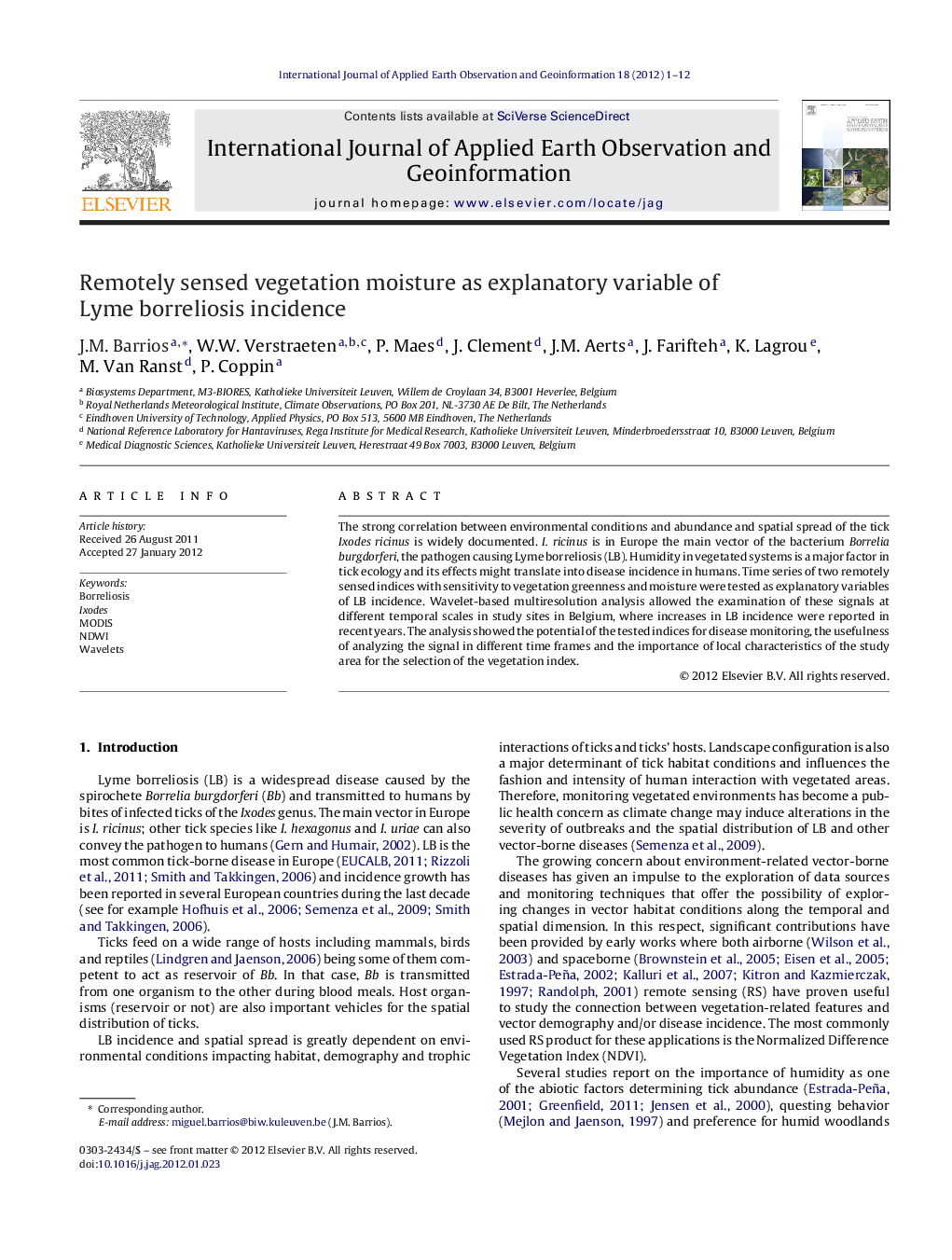| Article ID | Journal | Published Year | Pages | File Type |
|---|---|---|---|---|
| 4464906 | International Journal of Applied Earth Observation and Geoinformation | 2012 | 12 Pages |
The strong correlation between environmental conditions and abundance and spatial spread of the tick Ixodes ricinus is widely documented. I. ricinus is in Europe the main vector of the bacterium Borrelia burgdorferi, the pathogen causing Lyme borreliosis (LB). Humidity in vegetated systems is a major factor in tick ecology and its effects might translate into disease incidence in humans. Time series of two remotely sensed indices with sensitivity to vegetation greenness and moisture were tested as explanatory variables of LB incidence. Wavelet-based multiresolution analysis allowed the examination of these signals at different temporal scales in study sites in Belgium, where increases in LB incidence were reported in recent years. The analysis showed the potential of the tested indices for disease monitoring, the usefulness of analyzing the signal in different time frames and the importance of local characteristics of the study area for the selection of the vegetation index.
► Lyme borreliosis (LB) incidence has increased in recent years in Western Europe. ► Occurrence of LB is highly dependent on vegetation dynamics and moisture conditions. ► Remotely sensed vegetation water indices have potential as covariates of LB incidence. ► Analysis of spaceborne data at different time scales reveals links with LB incidence. ► The influence of local conditions in remote sensing data is highlighted.
